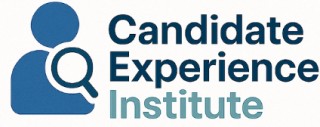
Understanding Candidate Experience
Importance of Understanding Candidate Experience
In today’s competitive market, organizations are increasingly realizing the importance of candidate experience in shaping their strategic planning. The candidate experience is much more than the interactions candidates have during job interviews. It encompasses every touchpoint a potential employee has with a company, from initial contact to the final hiring decision. This holistic view is critical to aligning your organization's strategic goals with the needs of future employees. Understanding the candidate experience involves a comprehensive analysis of your current recruitment processes and identifying areas where improvements can align with your strategic objectives. It’s about creating a positive first impression and ensuring consistency in sharing your company’s vision and objectives throughout the hiring process. As businesses aim to enhance their strategic plans, a data-driven approach to candidate experience can provide valuable insights into the recruitment process. Evaluating market trends and gathering feedback from various stakeholders can help identify potential gaps. This reflective practice allows organizations to adapt their strategies to meet evolving market conditions and organizational goals. Through effective decision making, companies can ensure their strategic initiatives are aligned with long-term candidate experience goals. Engaging team members across departments in this planning process is crucial for creating a shared understanding and commitment to the strategic objectives. By prioritizing the candidate experience, businesses can improve their performance indicators, positioning the organization to attract top talent better prepared to contribute to long-term success. For more insights into how to enhance your candidate experience with tailored business optimization strategies, explore the link.Aligning Strategic Goals with Candidate Experience
Aligning Strategic Goals with Candidate Experience
Creating a successful candidate experience strategy involves more than just isolated initiatives; it requires alignment with your organization's strategic objectives. This alignment ensures coherence in actions, helping the company fulfill both immediate and long-term goals.- Conducting a SWOT Analysis: Begin by reviewing your organization’s strengths, weaknesses, opportunities, and threats related to the candidate experience. This analysis helps identify areas that need alignment with your strategic goals, ensuring you leverage the right strengths and address potential vulnerabilities.
- Defining Strategic Objectives: Comprehend how the candidate experience fits into broader strategic plans. Define how improving candidate interactions supports your organization's mission and vision. Tailoring this approach helps clarify the connection between candidate experience strategies and the achievement of overall business objectives.
- Engaging Stakeholders: Foster a culture of stakeholder engagement. Involve team members from various departments to create a more holistic strategic planning process. Their insights are invaluable for ensuring that candidate experience goals align with organizational ambitions and market conditions.
- Integrating Market Trends: Keep abreast of current market trends and conditions which can impact candidate expectations and experiences. Building a flexible, adaptable strategy accounts for these dynamics, ensuring your organization thrives in changing environments.
- Formulating Strategic Initiatives: Translate your insights into actionable plans. Establish initiatives that focus on enhancing every touchpoint of the candidate journey, while staying true to your strategic vision. This entails decision-making grounded in data-driven insights and the integration of performance indicators to assess the effectiveness of these initiatives.
Key Questions for Evaluating Your Strategic Plan
Evaluating the Effectiveness of Your Current Strategy
To ensure that your strategic plans align seamlessly with your candidate experience objectives, it's crucial to regularly reassess and evaluate your current approach. Begin by asking the right questions that go beyond surface-level analysis, focusing on identifying gaps and opportunities for improvement in the strategic planning process. Here are some key aspects to consider:- Alignment with Organizational Goals: How well do your current candidate experience strategies support the larger organizational goals and mission? This involves examining whether your strategic objectives are in harmony with your company's vision and long-term goals.
- Stakeholder Engagement: Who are the key stakeholders involved in your candidate experience initiatives, and what roles do they play? Engaging with both internal team members and external partners can enhance the planning process and lead to more comprehensive decision making.
- Data-Driven Decisions: Is your strategy informed by data-driven insights? Consider integrating market analysis and performance indicators to refine your approach. This not only boosts the effectiveness of your strategic initiatives but also aligns them more closely with the latest market conditions and trends.
- Feedback Integration: How effectively is candidate feedback incorporated into your strategic plans? A successful strategy often involves a dynamic process where candidate input is used to adapt and improve approaches consistently. For more insights on effectively implementing feedback, check this resource.
- Adaptability to Market Trends: Is your strategy flexible enough to adapt to changing market trends and conditions? An agile approach that allows your candidate experience strategy to evolve alongside market developments will keep your organization competitive and responsive.
Integrating Feedback into Your Strategic Plan
Integrating Feedback into Your Strategic Plan
Incorporating feedback into your strategic planning process is crucial for refining your candidate experience strategy. Feedback serves as a powerful tool to align your strategic goals with the expectations and experiences of candidates. It allows your team to make informed decisions that drive improvements and enhance overall performance.
Here are some key steps to effectively integrate feedback into your strategic plan:
- Collect Diverse Feedback: Gather input from various stakeholders, including candidates, team members, and other relevant parties. This comprehensive approach ensures that your strategy is informed by a wide range of perspectives.
- Analyze Feedback Data: Use data-driven analysis to identify patterns and trends in the feedback. This will help your organization pinpoint areas for improvement and recognize successful initiatives.
- Align Feedback with Strategic Objectives: Ensure that the feedback aligns with your organization's mission and strategic objectives. This alignment will help prioritize initiatives that support long-term goals.
- Incorporate Feedback into Decision-Making: Use the insights gained from feedback to inform your strategic planning process. This will enable your team to make data-driven decisions that enhance the candidate experience.
- Communicate Changes: Clearly communicate any changes or improvements made as a result of feedback. Transparency fosters trust and demonstrates a commitment to continuous improvement.
Integrating feedback into your strategic plan not only improves the candidate experience but also strengthens your organization's ability to adapt to changing market conditions and achieve its long-term objectives. By valuing stakeholder engagement and using feedback as a strategic tool, your company can enhance its performance and maintain a competitive edge.
Measuring the Success of Your Candidate Experience Strategy
Evaluating Candidate Experience Success
Monitoring the effectiveness of your candidate experience strategy is essential in ensuring that your organization is on the right track towards achieving its long-term goals. By utilizing performance indicators that accurately measure the impact of your strategy, you can make data-driven decisions that benefit the entire business. Here are some crucial elements to consider:- Define Key Performance Indicators (KPIs): Establish clear KPIs relevant to your specific goals. These might include metrics such as candidate satisfaction, time-to-hire, or interview-to-offer ratios. Customizing your KPIs reflects the strategic priorities of your organization and aligns with its vision.
- Conduct Regular SWOT Analysis: Periodic evaluations of your strengths, weaknesses, opportunities, and threats will provide a comprehensive overview of where your strategic initiatives currently stand. This process will aid in identifying areas for improvement and capitalizing on market opportunities.
- Stakeholder Engagement: Involve stakeholders like team members, hiring managers, and even candidates themselves in assessing the strategy's effectiveness. Gathering diverse perspectives ensures a holistic view of your candidate experience, facilitating improvements tailored to varied needs.
- Utilize Data for Strategic Insights: Leverage data analytics to discern trends and patterns, guiding your strategic planning efforts. Quantitative data provides a factual basis for enhancing the planning process, while qualitative feedback adds depth to your analysis.
- Evaluate Against Market Trends: Benchmark your candidate experience strategy against current market conditions and trends. Keeping abreast of industry standards allows for informed adjustments that align with the evolving expectations of your target talent pool.
Adapting Your Strategy for Future Success
Adapting to Evolving Market Conditions
In the ever-changing landscape of candidate experience, staying attuned to market trends and conditions is crucial. Organizations must remain flexible and responsive to shifts in the market to ensure their strategies remain effective. This involves conducting regular SWOT analyses to understand strengths, weaknesses, opportunities, and threats related to your candidate experience strategy. By doing so, you can align your strategic objectives with the current market dynamics, ensuring your approach remains relevant and competitive.
Engaging Stakeholders for Long-term Success
Stakeholder engagement is a critical component of any successful strategic plan. Involving team members and other stakeholders in the planning process not only fosters a sense of ownership but also brings diverse perspectives to the table. This collaborative approach can lead to more innovative solutions and a shared commitment to achieving organizational goals. Regularly soliciting feedback from stakeholders and integrating it into your strategy can help refine your objectives and improve overall performance.
Leveraging Data for Informed Decision Making
Data-driven decision making is essential for adapting your candidate experience strategy to future challenges. By utilizing performance indicators and other data points, organizations can make informed decisions that enhance their strategic initiatives. This approach allows for continuous improvement and ensures that the strategic goals are aligned with the organization's mission and vision. Regular analysis of data can also help identify areas for improvement, enabling your team to make necessary adjustments in a timely manner.
Setting Strategic Objectives for Future Growth
Establishing clear strategic objectives is vital for guiding your organization towards long-term success. These objectives should be aligned with the company's vision and should consider both short-term and long-term goals. By setting achievable and measurable objectives, your organization can effectively track progress and make necessary adjustments to the strategic plan. This proactive approach ensures that your candidate experience strategy remains aligned with the broader organizational goals.












